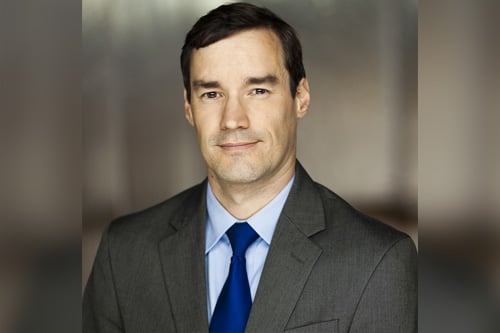Portfolio manager sets out short- and long-term reasons why asset should be part of your investment strategy

Gold is trending again … but is it a traditional reaction to increased market uncertainty or is it a sign of a brighter long-term future for the yellow metal?
Nicolas Piquard, portfolio manager and options strategist at Horizons ETFs, admitted that gold’s value as an alternative asset usually increases when volatility unsettles investors. He sees similarities to the last gold run after the 2008 crisis – although there was a jump in 2016 – when market jitters and quantitative easing drove the price up.
This time around, volatility has been compounded by trade wars and low growth forecasts from the US Federal Reserve, the Bank of Canada and most recently the European Central Bank (ECB). All three are unlikely to raise rates in the near future, which Piquard said is a positive for gold.
“If yields are low, then that just means that you are not earning very much on your bonds and your currencies, so gold is a good alternative asset. That’s the macro picture.”
Piquard, however, digs deeper into why now is fundamentally a good time for investors to allocate to gold and told WP there are things happening in the asset class that paint a bright, long-term picture for the metal and its miners.
The most eye-catching is the supply-demand scenario, with recent headlines featuring the first major merger activity in the space for more than 10 years after Barrick Gold’s $6 billion takeovers of Randgold Resources, Newmont Mining’s merger with Canada’s Goldcorp and Barrick’ subsequent counterbid. The industry is hot right now.
Piquard said: “The gold miners because gold prices have not been very high, have really been reinvesting in their business and not exploring for new mines. There hasn’t been a major gold discovery in a long time and no big mines have come open. Reserves are dwindling and costs are creeping in, so the miners have had to cut costs, merge and find synergies.
“I think what we will see over the next few years is not only will the cost of producing gold go up but also there’s going to be less supply of it as these miners get older, which will push prices higher.”
Piquard conceded that on the demand side, investor interest is fickle but that there is one big collective player that has grown in prominence over the past few years – and that’s the global central banks. Last year, they purchased more than 600 tons of gold, which was the biggest single-year purchase since Bretton Woods collapsed in the 1970s. Previously, the central banks were selling gold but now the sand has shifted.
“China, Russia, and Turkey are buying gold and [US President Donald] have changed the global political system with his trade wars and rhetoric. A lot of central banks have thought, ‘maybe I can’t hide in the US dollar, maybe I have to have a bit of gold just in case’.
“That’s a real change in psychology. Up until Trump, central banks were very comfortable holding all their reserves in US dollars. He has eroded people’s confidence in the dollar a bit.”
All things combined, while the volatility represents a short-term catalyst, Piquard believes there are solid fundamental supply-and-demand reasons to invest in gold right now and into the future.
He suggests maybe 5-10% of your portfolio should be allocated to it depending on your risk tolerance and points to the fact that Ray Dalio at Bridgewater Associates, one of the most successful investors in the world, has gold in his All-Weather Portfolio.
“It isn’t correlated to other assets,” Piquard said. “It provides a real hedge against uncertainty and if you talk to most investors, they don’t have a very big allocation to gold or gold miners or gold equities.”
The S&P 500 has only one gold miner on the index and while Canada is a little better in terms of options, Piquard said institutional investors habitually bypass gold.
“Most of them don’t have any gold exposure, so I think over the next few years you are going to see that happening a bit more.”
While gold seeps back into the minds of worried investors, modern monetary theory is a new buzz phrase being thrown around, perhaps most notably by the Democratic Party’s rising star, Alexandria Ocasio-Cortez. She is a vocal champion of MMT, a position that believes deferral deficits are not as bad as we’ve been led to believe.
In basic terms, it’s about spending to create growth, therefore adding to the deficit. Piquard believes there is another sign of the general ambivalence to rising debt levels, which is ultimately good for gold.
He explained: “When you look at that you realise the Democratic Party has completely forgotten about debt and is happy to just spend and spend some more. But even if you look at the Republican side under Trump, they’ve cut taxes but they haven’t cut spending, so debt has been growing even faster than under Obama.
“So, even Republicans don’t care about debt and globally no one seems to care about debt! Long term, that’s also a positive for gold. As more and more debt gets racked up, there is more of an incentive to monetize it, which is good for all real assets.”



